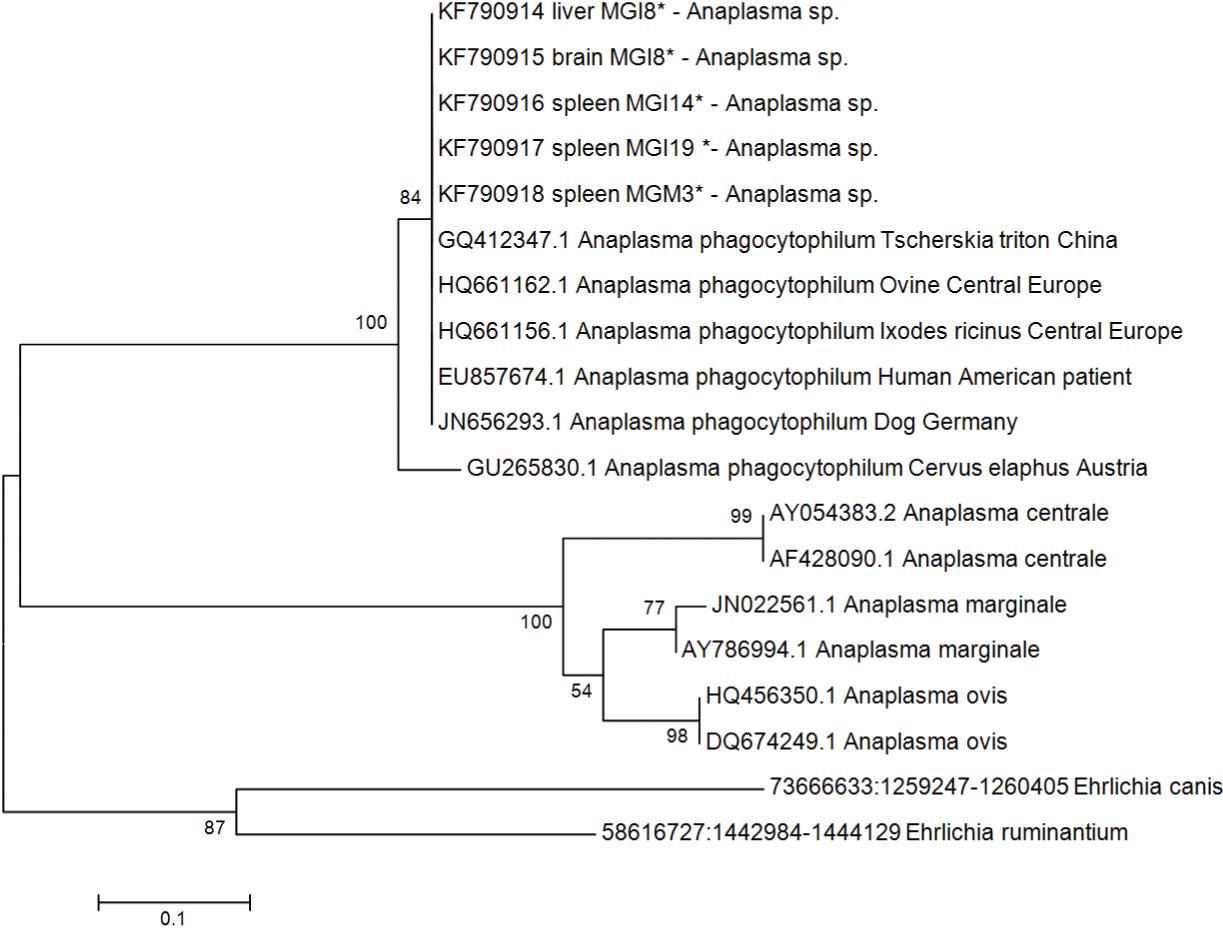Tick-borne infections can result in serious health problems for wild ruminants, and some of these infectious agents can be considered zoonosis. The aim of the present study was the post-mortem detection of hemoparasites in free-living Mazama gouazoubira from Minas Gerais state, Brazil. The deer samples consisted of free-living M. gouazoubira (n = 9) individuals that died after capture. Necropsy examinations of the carcasses were performed to search for macroscopic alterations. Organ samples were collected for subsequent imprint slides, and nested PCR assays were performed to detect hemoparasite species. Imprint slide assays from four deer showed erythrocytes infected with Piroplasmida small trophozoites, and A. marginale corpuscles were observed in erythrocytes from two animals. A. marginale and trophozoite co-infections occurred in two deer. A nested PCR analysis of the organs showed that six of the nine samples were positive for Theileria sp., five were positive for A. phagocytophilum and three were positive for A. marginale, with co-infection occurring in four deer. The results of the present study demonstrate that post-mortemdiagnostics using imprint slides and molecular assays are an effective method for detecting hemoparasites in organs.
Anaplasma spp.; Piroplasmida; molecular diagnostic; brown brocket deer; free-living; post-mortem detection; hemoparasites



